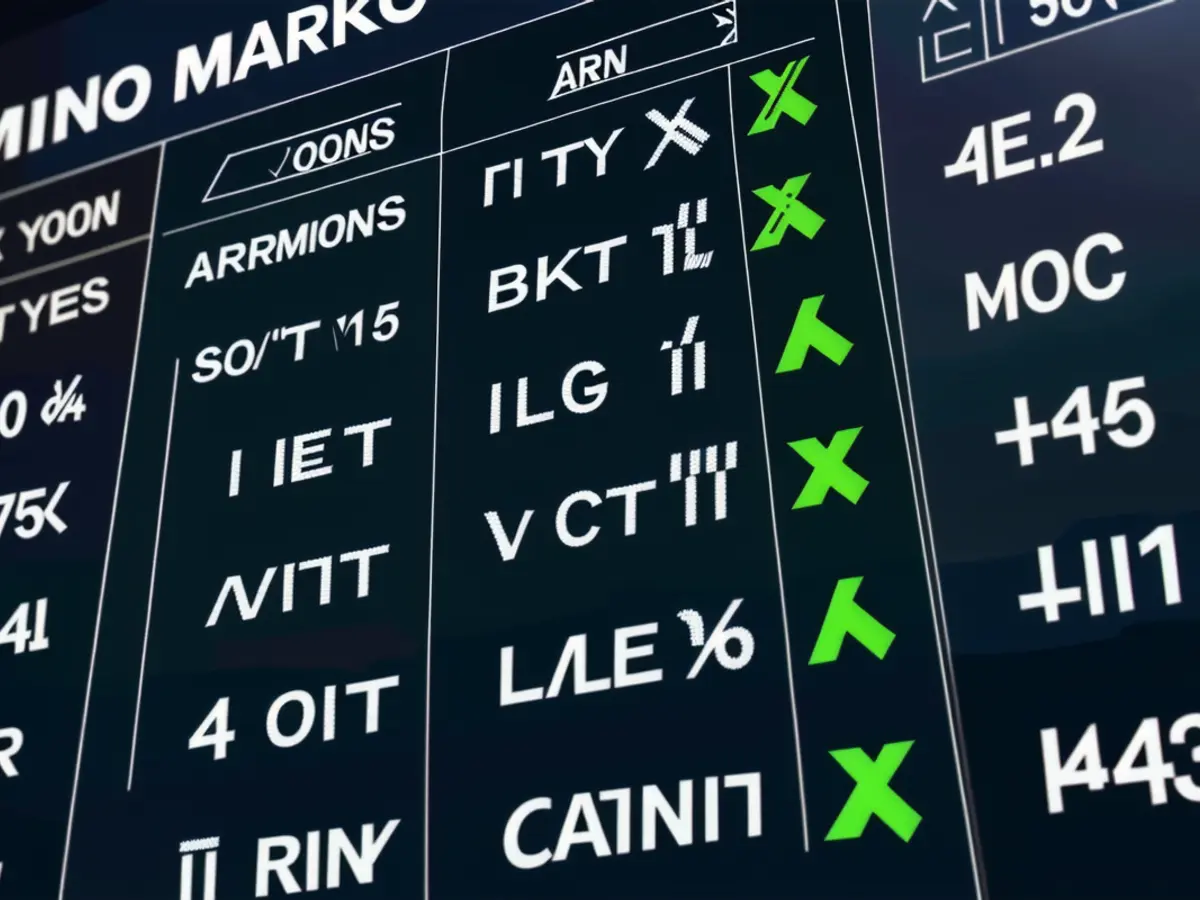Determining Revenue from Bond Sales: A Step-by-Step Guide
Understanding the bond market can be perplexing for investors, especially when it comes to determining the proceeds from selling a bond. While quoted bond prices serve as a starting point, there are additional factors to consider.
Proceeds at Maturity
Proceeds from a Bond at Maturity
In certain situations, the 'sale' of a bond transpires at maturity, when the issuing company redeems it. This circumstance is relatively straightforward, with proceeds comprising two parts: the final interest payment and the maturity payment.
The final interest payment is derived by multiplying the bond's par value by the stated coupon rate, usually split into two installments for semi-annual payments. The maturity payment is usually the bond's par value. For instance, a $1,000 bond with a 5% coupon rate would yield $1,025 at maturity, combining the last semi-annual interest payment ($25) with the par value ($1,000).
Proceeds before Maturity
Proceeds from Sales of Bonds before Maturity
Selling a bond prior to maturity introduces complexity. You'll still receive an interest and principal component, but the interest will only cover the proportion of the period that has elapsed since the last regular interest payment, and the principal will reflect the bond's current price, which may differ significantly from its par value.
Consider a 5% bond with a par value of $1,000, a coupon rate, and a price skyrocketing to $1,100 due to a market-wide decline in interest rates, with three months having passed since its last semi-annual interest payment.
Related Investing Topics
Related Investing Topics
**#### How to Invest in Bonds: A Beginner's Guide to Buying Bonds
Bonds are often regarded as a "safe" investment, but are they right for you?****#### Everything You Need to Know About Patriot Bonds
Patriot Bonds are another name for Series EE savings bonds issued between December 2001 and December 2011.****#### Bonds vs. Stocks: What's the Difference?
Investing in stocks and bonds can aid in wealth creation for anyone with disposable income. Learn about the distinctions between them.****#### Buying Savings Bonds for Kids
Buying savings bonds for a kid is not only possible but extremely simple to execute.**In this scenario, upon selling the bond, you'll again receive proceeds in two parts. The principal part will be equal to the bond's current price of $1,100. The interest will be that portion of the $25 semi-annual interest payment coinciding with the elapsed time since the last interest payment. In this instance, since three months have passed, half of the semi-annual interest payment has been accrued, equating to $12.50, and the total proceeds from selling the bond will be $1,112.50.
Matters can get intricate, but focusing on the bond's price and the elapsed time since the last interest payment will help you calculate proceeds from a bond sale.
Our Website has a disclosure policy.
In situations where a bond reaches maturity, the issuing company redeems it, resulting in proceeds comprising the final interest payment and the maturity payment, which is typically the bond's par value. On the other hand, selling a bond before maturity introduces complexity, as the proceeds will include the bond's current price and an interest payment proportionate to the time elapsed since the last interest payment. Properly considering these factors can help investors calculate their proceeds from bond sales.
When investing in bonds, it's essential to understand the relationship between the bond's price, the coupon rate, and the elapsed time since the last interest payment to accurately calculate the proceeds from selling before maturity.







